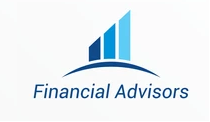
Verifen vs. The Bank vs. The MCA: A Head-to-Head Comparison and How to Qualify for a Business Loan. 2026 Checklist for Entrepreneurs

Verifen vs. The Bank vs. The MCA: A Head-to-Head Comparison
Introduction: Not All Capital is Created Equal
Choosing a source for business funding is one of the most consequential decisions an entrepreneur will make. It is akin to selecting a key strategic partner, as the choice will profoundly impact a company’s cash flow, operational flexibility, and ultimate capacity for growth. Yet, many business owners evaluate their options on a narrow set of metrics, typically the loan amount and the speed of funding, without a full appreciation of the hidden trade-offs and long-term implications.
This analysis moves beyond a simplistic “pros and cons” list to conduct a rigorous, head-to-head comparison of the three primary funding archetypes available to small and mid-sized businesses: the Traditional Bank, the Merchant Cash Advance (MCA) Provider, and the Modern Fintech Partner, as exemplified by Verifen. The evaluation will proceed across the criteria that truly determine the value of capital: its true cost, its impact on cash flow, its flexibility, and the strategic value it brings to the business. The objective is to illuminate the often-opaque financial landscape and empower entrepreneurs to make the most intelligent choice for their company’s future.
The Contenders: Defining the Players
To understand the comparison, it is essential to first define the key characteristics of each contender.
-
The Traditional Bank: This is the institution of record, the cornerstone of the financial system. Banks are known for offering capital at competitive interest rates but are characterized by slow, bureaucratic processes, rigid underwriting criteria, and a largely impersonal, one-size-fits-all approach to small business lending.
-
The MCA Provider: This is the “fast cash” specialist of the alternative finance world. An MCA is not a loan but a purchase of future receivables at a discount. This industry is defined by its lightning-fast funding and minimal qualification requirements, but also by its opaque, high-cost pricing structures and aggressive daily repayment methods.
-
The Modern Fintech Partner (Verifen): This is the hybrid model, designed to bridge the gap between the other two. It leverages technology to deliver the speed and convenience of an online lender while incorporating the strategic, relationship-based support of a true financial partner. The model aims to achieve an optimal balance of speed, fair cost, flexibility, and tangible value-add services.
The Showdown: A Point-by-Point Analysis
A direct, point-by-point comparison reveals the stark differences in the value proposition offered by each funding model.

Criterion 1: Speed to Funding
-
Bank: The timeline for a traditional bank loan is typically measured in weeks, if not months. The process involves extensive paperwork, multiple in-person meetings, and slow-moving underwriting committees.
-
MCA Provider: Speed is the primary selling point. Funding can be secured in as little as 24 to 72 hours, driven by automated decisions and minimal documentation requirements.
-
Verifen: Funding is delivered in 24 to 48 hours. This model leverages financial technology to streamline the application and data analysis but retains a crucial human review element to ensure the funding offer is appropriate and sustainable for the business.
-
Analysis: Speed is a valuable feature, but it can also be a liability. The extreme speed of MCA providers is often a direct function of their lack of thorough due diligence. This operational risk is not absorbed by the provider; it is transferred directly to the borrower in the form of high costs and inflexible terms. The modern fintech model balances speed with responsibility.
Criterion 2: The True Cost of Capital (Factor Rate vs. APR vs. Flat Fee)
-
Bank: Banks use the industry-standard Annual Percentage Rate (APR) to express cost, but this can be supplemented by origination fees, documentation fees, and sometimes prepayment penalties that increase the total cost of borrowing.
-
MCA Provider: MCAs intentionally avoid using APR. Instead, they use a “factor rate” (e.g., 1.35), a simple multiplier that is designed to sound less intimidating than an APR but which obscures an astronomical true cost. The effective APR on an MCA can easily exceed 100%, and in some cases, 400%. Critically, there is no financial benefit to repaying an MCA early; the total payback amount is fixed, meaning the provider receives their full profit regardless of the repayment speed.
-
Verifen: This model champions transparency with a simple, flat fee that is explained upfront. There is no compounding interest or confusing factor rate. Most importantly, Verifen offers early payoff incentives, allowing businesses to save money by settling their debt ahead of schedule, a feature that directly contradicts the MCA profit model.
-
Analysis: The choice of a pricing metric is a powerful signal of a lender’s ethics. Banks use a standardized, regulated metric (APR). MCA providers invented a non-standard, unregulated metric (the factor rate) specifically to exploit an information gap. This creates an “asymmetry of financial sophistication,” where the lender knows the true, exorbitant cost, while the time-pressed entrepreneur sees a seemingly simple number. Verifen’s model, with its transparent flat fee and early payoff options, is strategically designed to eliminate this asymmetry and build trust through education and clarity. It operates on the principle that an empowered, informed customer is the best kind of customer.
Criterion 3: Repayment Structure & Cash Flow Impact
-
Bank: Repayment is structured in predictable, fixed monthly installments. This is ideal for businesses with highly stable and predictable revenue but can become a burden during seasonal or unexpected slow periods.
-
MCA Provider: Repayment is executed through aggressive daily or weekly ACH debits directly from the business’s bank account. This is the primary mechanism that strangles a company’s operating cash flow, often forcing it into the “death spiral” of taking on more debt to cover the daily payments.
-
Verifen: This model offers a range of flexible options. Term loans come with predictable monthly payments, but without the punishing daily debits of MCAs. For businesses with fluctuating revenue, Revenue-Based Financing (RBF) options align payments with performance, providing a built-in safety net during slower months.
-
Analysis: For many small businesses, the repayment structure is more critical than the interest rate. A low-rate loan with an inflexible monthly payment can be more dangerous to a seasonal or project-based business than a slightly higher-cost option with a flexible repayment schedule that mirrors its actual cash flow.
Criterion 4: The Value-Add: Strategic Support
-
Bank: The relationship is transactional and typically ends once the loan funds are disbursed. Banks do not provide business strategy support.
-
MCA Provider: The relationship is purely transactional and often becomes adversarial, focused solely on collection. There is no strategic support offered.
-
Verifen: This is a core pillar of the value proposition. The partnership extends beyond capital to include a full suite of advisory services designed to help the business grow smarter. This includes expert guidance on Sales Optimization (CRM workflows, lead funnels), Marketing Strategy (digital scaling, branding), Operations Planning (process improvement, automation), and Business Modeling (margin optimization, pricing analysis).
-
Analysis: A powerful way to frame the difference is that traditional lenders provide a tool (money), and predatory lenders set a trap. A true partner provides the tool and the instruction manual. The capital solves today’s problem; the strategy helps prevent tomorrow’s.
The Verdict: The Funding Provider Showdown
The following table summarizes the detailed analysis, offering a clear visual comparison of the three models across the most critical decision-making criteria.
|
Feature |
Traditional Banks |
MCA Providers |
Verifen |
|
Time to Funding |
3–6 weeks |
24–72 hours |
24–48 hours |
|
Fee Clarity |
Often vague (APR + hidden fees) |
Hidden rates (Factor Rate) |
Clear and flat |
|
Daily Repayments |
No |
Yes |
No |
|
Business Strategy Support |
No |
No |
Yes |
|
Early Payoff Savings |
Rare / Penalties |
Never |
Yes |
|
Refinance and Restructure |
No |
No |
Yes |
|
Growth and Marketing Help |
No |
No |
Yes |
Conclusion: Choosing Your Growth Engine
The choice of a funding provider is a strategic decision that will either accelerate or impede a business’s growth trajectory. The evidence from this comparative analysis is clear. While traditional banks are too slow, rigid, and impersonal for the needs of many modern SMBs, and MCA providers are too fast, costly, and predatory to be considered a viable long-term solution, the modern fintech partner model offered by Verifen presents the most compelling value proposition. It successfully balances speed with responsibility, cost with transparency, and, most importantly, capital with strategy. For the entrepreneur looking not just for a check, but for a genuine growth engine, the choice is clear.

How to Qualify for a Business Loan: A 2026 Checklist for Entrepreneurs
Introduction: Preparing Your Business for Funding Success
Securing a business loan or line of credit is a pivotal moment for any growing company. However, the path to approval is often misunderstood. It is not merely a matter of filling out an application; it is a process of demonstrating to lenders that a business is a reliable, well-managed, and creditworthy enterprise. Many entrepreneurs, particularly those with past credit challenges or those new to the funding landscape, approach the process unprepared, leading to frustrating denials or unfavorable terms.
This guide provides a comprehensive, actionable checklist for 2026, designed to demystify the underwriting process. It details exactly what lenders look for and outlines the concrete steps business owners can take to strengthen their financial profile. By treating a company’s financial record like a professional resume, entrepreneurs can significantly increase their chances of not only getting approved but qualifying for the larger amounts and better rates that fuel sustainable growth.
The Lender’s Lens: Key Evaluation Criteria
Lenders perform a risk assessment to determine the likelihood of being repaid. This evaluation centers on a few key areas of a business’s financial health and history.
1. Bank Statement Analysis: The Story of Your Cash Flow
Your business bank statements provide a raw, day-to-day narrative of how your company operates. Lenders typically require the last four months of statements to analyze your cash flow patterns and financial discipline.
-
Key Metrics Under Review:
-
Total Monthly Deposits: This establishes your baseline revenue and is a primary factor in determining your potential funding amount. Lenders often offer between 70% and 150% of your average monthly revenue.
-
Frequency and Volume of Deposits: A high number of deposits (e.g., 3-5 per week) indicates consistent business activity and a healthy sales cycle. A few large, sporadic deposits can be a red flag for instability.
-
Average Daily Balance (ADB): This is a critical indicator of your cash management skills. Lenders want to see a stable, positive buffer. An ADB consistently above $5,000 is a strong positive signal, while an ADB that frequently drops near zero suggests the business is operating on the edge.
-
Overdrafts and NSFs (Non-Sufficient Funds): These are automatic red flags and among the most damaging items on a bank statement. Returned payments or negative balance days signal to a lender that the business cannot manage its current financial obligations, making it a very high risk for additional debt.
-
Checklist for a Healthy Bank Account:
-
Maintain an average daily balance of over $1,000, ideally over $5,000.
-
Show consistent, frequent deposits.
-
Have zero overdrafts or negative balance days in the last 3-4 months.
-
Have zero returned payments (NSFs).
-
Ensure business revenue is consistently above $10,000 per month.
2. Business and Personal Credit Scores: Your Financial Reputation
Credit scores are a standardized measure of creditworthiness. Lenders will almost always review both the business’s credit profile and the owner’s personal credit history.
-
Understanding the Scores:
-
Personal Credit (FICO Score): This score (ranging from 300-850) reflects an individual’s personal debt management. For new businesses or sole proprietorships, this is often the primary credit metric used. A score of 650+ is generally needed to access better loan offers.
-
Business Credit (e.g., D&B PAYDEX, Experian Intelliscore): This score (typically 0-100) is tied to the business’s EIN and reflects its history of paying suppliers, vendors, and lenders. A strong score (e.g., PAYDEX of 80+, Intelliscore of 76+) is crucial for separating business and personal liability and accessing the best financing terms.
-
Checklist for Building Strong Credit:
-
Register the business as a formal entity (LLC, Corp) and get an EIN.
-
Open a dedicated business bank account.
-
Open business credit cards and vendor accounts (trade lines) that report to the major business credit bureaus (Dun & Bradstreet, Experian, Equifax).
-
Pay all bills, utilities, suppliers, loans, credit cards, on time or early. Payment history is the single largest factor in credit scores.
-
Keep credit utilization low (under 30% of the available limit) on all credit cards.
-
Regularly monitor both personal and business credit reports for errors and dispute any inaccuracies.
3. Financial Health and Debt Position: The Big Picture
Lenders look beyond cash flow and credit to assess the overall financial stability and existing leverage of the business.
-
Key Considerations:
-
Time in Business: Most lenders, especially traditional banks, prefer to see at least two years of operating history. This track record demonstrates stability and reduces the perceived risk associated with startups.
-
Existing Debt (Loan Stacking): Lenders will scrutinize your current debt obligations. Having multiple active loans or, especially, merchant cash advances is a major concern. “Stacking” debt signals that a business may be overleveraged and struggling with financial management, which significantly reduces borrowing capacity.
-
Defaults and Delinquencies: A past default on a loan or a significant delinquency is one of the most severe blemishes on a financial profile. It can destroy the chances of getting approved for favorable terms, or any terms at all. Resolving all open balances and maintaining good standing with all creditors is essential.
-
Checklist for Overall Financial Health:
-
Have at least two years of business operations, if possible.
-
Avoid having multiple active cash advances or short-term loans.
-
Have no recent defaults or major delinquencies on your record.
-
Maintain clean and organized financial records (P&L statements, balance sheets).
-
Ensure all business taxes are filed on time and records are readily available.
Conclusion: Positioning Your Business for Approval
Qualifying for a business loan is not a passive activity. It is the result of proactive and disciplined financial management. By focusing on maintaining healthy bank balances, building a strong credit history, and avoiding critical red flags like NSFs and loan stacking, entrepreneurs can transform their financial profile from a liability into a powerful asset. This preparation not only increases the likelihood of a swift approval but also unlocks access to larger loan amounts, lower costs, and more favorable repayment terms that can serve as a true catalyst for growth. The work done to strengthen a business’s financial resume before an application is submitted is the most important work of all.
Verifen Launches Strategic Advisory Services to Bridge Capital and Growth Gap for SMBs
Verifen Launches Strategic Advisory Services to Bridge Capital and Growth Gap for Small and Mid-Sized Businesses.
Verifen, a leader in innovative business financing, today announced the launch of its comprehensive Business Advisory services, a new division created to address a critical gap in the small business ecosystem: the disconnect between accessing capital and effectively using it to achieve sustainable growth. This initiative formally integrates high-impact strategic support with Verifen’s flexible funding solutions, positioning the company as the first true growth partner for American entrepreneurs.
The announcement comes at a time when small and mid-sized businesses (SMBs) face a complex economic environment. While 59% of firms are actively seeking financing to manage operations and fund expansion, many find that capital alone is not enough to overcome challenges like rising costs, uneven cash flow, and intense competition. Verifen’s new advisory services are designed to provide the strategic horsepower needed to turn funding into lasting success.
“For too long, the lending industry has operated on a transactional model: provide capital and walk away,” said the CEO of Verifen. “We see things differently. Capital is a tool, but a tool is only as good as the strategy guiding its use. Our advisory services are the answer to the question every business owner asks after getting funded: ‘Now what?’ We’re here to help them answer that question and execute a plan for smart, scalable growth.”
Verifen’s advisory services are built on five core pillars, each targeting a key area of business operations:
-
Sales Optimization: Designing and implementing effective CRM workflows, lead generation funnels, and customer journey maps to increase revenue.
-
Marketing Strategy: Providing expert guidance on paid traffic acquisition, brand development, content marketing, and digital scaling.
-
Operations Planning: Helping businesses improve internal processes, develop scalable systems, and implement automation to increase efficiency.
-
Business Modeling: Conducting in-depth analysis of profit margins, developing new revenue streams, and optimizing pricing strategies.
-
Leadership & Culture: Offering frameworks for team development, strategic hiring, and creating high-performance work environments.
This integrated “Capital + Strategy” model directly contrasts with traditional banks, which offer no strategic support, and high-cost alternative lenders like MCA providers, whose business models can actively harm a company’s long-term health [Original Article]. By combining its agile fintech platform, which provides funding in as little as 24 hours, with this new layer of expert guidance, Verifen is creating a growth-driven ecosystem for SMBs.
“We saw entrepreneurs getting trapped in two cycles: the slow, bureaucratic cycle of bank lending, and the fast, predatory debt cycle of merchant cash advances,” the CEO added. “Verifen offers the way out. We provide fast, transparently priced capital, and then we stick around to help our clients build a fundamentally stronger business. That’s our promise.”
The new services are available immediately to all Verifen clients and are part of the company’s core mission to empower business growth at every stage.
About Verifen:
Verifen is a leading provider of business financing and strategic advisory services for small and mid-sized businesses across the United States. By combining a full suite of flexible funding products, including Term Loans, Business Lines of Credit, and Revenue-Based Financing, with hands-on support, Verifen helps entrepreneurs not only access capital but also make smarter decisions to grow sustainably. With a commitment to transparent, flat-fee pricing and a customer-centric approach, Verifen is a preferred alternative to traditional banks and high-cost MCA providers.





